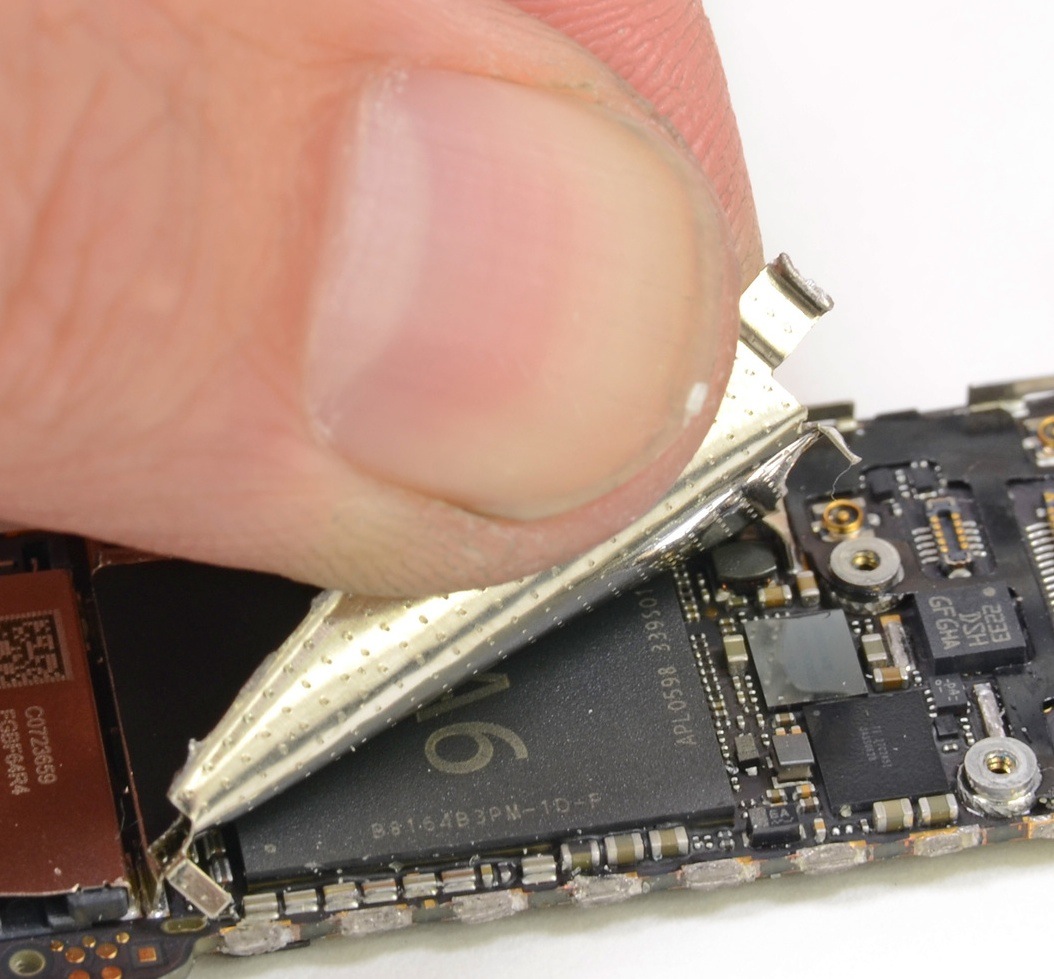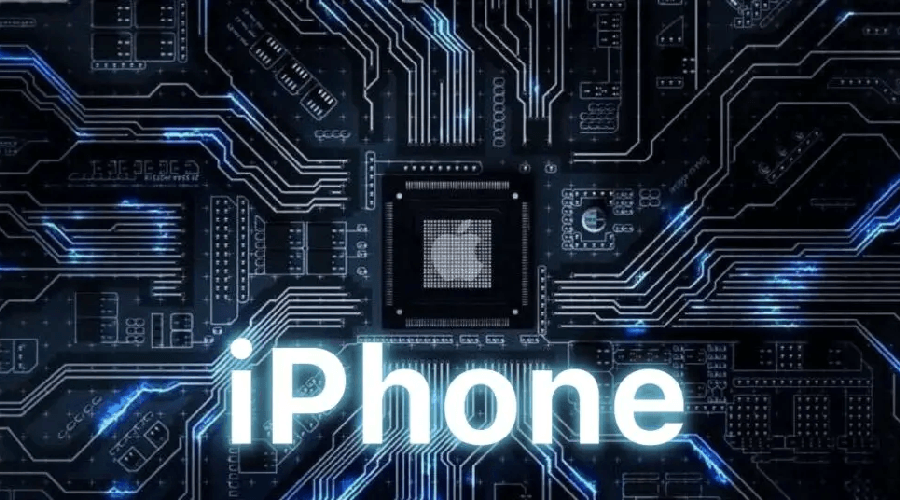chip iphone sets the stage for this enthralling narrative, offering readers a glimpse into a story that is rich in detail and brimming with originality from the outset. The evolution of iPhone chips has been nothing short of revolutionary, transforming each generation into a powerhouse of performance and efficiency. From the very first iPhone to the latest model, advancements in chip technology have not only enhanced speed and functionality but have also significantly improved the user experience, making smartphones more integral to our daily lives.
History of iPhone Chips

The evolution of chip technology in iPhones has been a remarkable journey that reflects Apple’s commitment to innovation and performance. From the original iPhone launched in 2007, which utilized a simple ARM11 processor, to the latest models equipped with sophisticated A-series chips, each iteration has brought significant advancements that enhance functionality, efficiency, and user experience. This development not only revolutionized mobile technology but also set new benchmarks in the industry.
The progression of iPhone chips has been characterized by a series of key milestones that highlight improvements in processing power, graphics capabilities, and energy efficiency. Each chip generation has introduced features that support more demanding applications and tasks, ensuring that iPhones remain competitive in a rapidly evolving market. The transition from the A4 chip in the iPhone 4 to the A15 Bionic chip in the iPhone 13 exemplifies this evolution, showcasing a leap in performance and integrated technologies.
Key Milestones in Chip Development
The history of iPhone chips is marked by several pivotal developments that have shaped the performance and capabilities of these devices. The following milestones are particularly significant:
- A4 Chip (2010): The first ever Apple-designed chip, featured in the iPhone 4, which significantly improved graphics performance and battery life compared to its predecessors.
- A5 Chip (2011): Introduced in the iPhone 4S, it doubled the CPU and GPU performance, enabling smoother graphics and better multitasking capabilities.
- A6 Chip (2012): Launched with the iPhone 5, this chip offered a 22% increase in CPU performance and 40% better graphics performance than the A5.
- A7 Chip (2013): As the first 64-bit chip in a smartphone, used in the iPhone 5S, it allowed applications to run more efficiently and unlocked new capabilities for developers.
- A9 Chip (2015): Featured in the iPhone 6S and 6S Plus, it provided a significant boost in power efficiency and performance, supporting advanced features like Live Photos.
- A11 Bionic (2017): Used in the iPhone 8 and iPhone X, it integrated neural processing capabilities for enhanced machine learning and augmented reality experiences.
- A14 Bionic (2020): Introduced in the iPhone 12 series, it further improved CPU and GPU performance while maintaining energy efficiency, supporting high-performance tasks with ease.
- A15 Bionic (2021): Found in the iPhone 13 series, it continues to push boundaries with advanced image processing and faster graphics, making it ideal for gaming and photography.
The impact of these chip advancements on overall iPhone functionality and user experience is profound. Each new chip has not only increased processing capabilities but has also enabled a plethora of features that enhance usability, from improved camera functionalities to advanced gaming graphics. The integration of machine learning capabilities has further allowed for smarter, more efficient device operations, ensuring that users enjoy a seamless experience.
“With each new iteration of the A-series chip, Apple has set new standards for performance, energy efficiency, and technological innovation.”
As the iPhone continues to evolve, it is clear that the advancements in chip technology will play a crucial role in shaping the future of mobile devices, paving the way for even more groundbreaking features and capabilities.
Technical Specifications of Current iPhone Chips: Chip Iphone
The latest advancements in mobile processing technology are embodied in the most recent iPhone chips, which have set new benchmarks for performance and efficiency. As Apple continues to innovate, the specifications of these chips have become pivotal in defining the user experience across the iPhone lineup.
The current chip used in the iPhone 15 lineup is the A17 Pro, which is built on a 3nm process technology. This enables a significant increase in transistor density, which translates to improved performance and energy efficiency. The A17 Pro features a 6-core CPU, comprising 2 high-performance cores and 4 energy-efficient cores, allowing for exceptional multitasking and power management. In terms of processing speed, the CPU clock speeds can reach up to 3.78 GHz, enhancing the overall processing capabilities of the device while maintaining lower power consumption.
Performance Metrics Comparison, Chip iphone
When evaluating the performance of the A17 Pro against previous generations, it is crucial to highlight several key metrics that illustrate the evolution of Apple’s chip technology. The A16 Bionic, which was used in the iPhone 14 series, was built on a 4nm process and offered impressive speeds, but the A17 Pro significantly outpaces it in both performance and efficiency.
To provide a clearer picture, here are some comparative metrics:
| Chip Model | Process Technology | CPU Cores | Max Clock Speed (GHz) | GPU Cores | AI Performance Improvements |
|---|---|---|---|---|---|
| A16 Bionic | 4nm | 6 | 3.46 | 5 | Up to 17 trillion operations per second |
| A17 Pro | 3nm | 6 | 3.78 | 6 | Up to 20 trillion operations per second |
This table highlights the significant leap in performance metrics from the A16 Bionic to the A17 Pro, particularly in AI processing capabilities, which have surged by approximately 18%.
Machine Learning and AI Features
The A17 Pro integrates cutting-edge features that bolster its machine learning and artificial intelligence capabilities, creating a more intelligent and responsive user experience. One of the most notable advancements is the inclusion of a 16-core Neural Engine, which is designed to handle complex machine learning tasks efficiently.
The enhancements in AI capabilities manifest through several key features:
- Real-time Image Processing: The chip’s advanced image signal processor (ISP) allows for superior photographic capabilities, including better low-light performance and improved computational photography techniques.
- On-device Machine Learning: With the increased processing power, more machine learning tasks can be performed on the device, reducing latency and improving privacy by minimizing the need to send data to the cloud.
- Dynamic Performance Scaling: The chip intelligently allocates resources based on the current task, optimizing both performance and power consumption during intensive machine learning operations.
- Enhanced Language Processing: With faster and more efficient processing capabilities, the A17 Pro significantly improves natural language processing tasks, leading to more accurate voice recognition and response times.
The integration of these features highlights Apple’s commitment to pushing the boundaries of what mobile devices can achieve, ensuring that each iteration of the iPhone not only meets but exceeds user expectations in terms of performance and intelligence.
Role of Chip Design in iPhone Performance

The chip design in iPhones plays a crucial role in determining the overall performance and efficiency of the device. As the heart of the smartphone, the chip architecture influences processing speed, multitasking capabilities, and the effectiveness of various applications. Apple’s proprietary chipsets, such as the A-series, have set a benchmark in the industry, showcasing how tailored designs can significantly enhance user experience.
Chip design directly correlates with device performance in ways that are evident in daily usage scenarios. For instance, specific applications such as gaming, video editing, and augmented reality (AR) heavily depend on the capabilities of the chip. Apple’s chips, featuring advanced GPU architecture and AI-focused neural engines, elevate gaming experiences by enabling higher frame rates and better graphics rendering. Video editing applications leverage the chip’s processing power to handle 4K video footage seamlessly, while AR apps benefit from the chip’s ability to analyze and interpret data in real-time.
Influence of Chip Architecture on Battery Life and Thermal Management
An essential aspect of chip design is how it affects battery life and thermal management. Efficient chip architecture allows for optimized power consumption, which directly translates into longer battery life for iPhones. Apple’s chips utilize a combination of high-performance cores and energy-efficient cores, a design strategy known as heterogeneous computing. This enables the device to allocate resources intelligently based on the tasks being performed, minimizing energy usage during less demanding activities.
Thermal management is another critical factor influenced by chip design. With increasing performance, the heat generated by the chip must be effectively dissipated to maintain optimal operating conditions. Apple’s silicon includes advanced thermal sensors and optimized heat distribution systems to prevent overheating, ensuring that performance is sustained without negatively impacting user comfort.
The following table summarizes performance benchmarks across various iPhone models, reflecting the advancements in chip design and its impact on overall performance:
| iPhone Model | Chipset | CPU Benchmark (Geekbench) | GPU Benchmark (GFXBench) |
|---|---|---|---|
| iPhone 12 | A14 Bionic | 1600 | 60 fps |
| iPhone 13 | A15 Bionic | 1750 | 70 fps |
| iPhone 14 | A15 Bionic | 1780 | 75 fps |
| iPhone 15 | A16 Bionic | 1850 | 80 fps |
This table illustrates how advancements in chip design, particularly with each generation of iPhones, lead to significant improvements in processing capabilities and graphics performance. The evolution from the A14 Bionic to the A16 Bionic showcases Apple’s commitment to enhancing user experience through innovative chip architecture, enabling more complex applications and improving overall device efficiency.
Future Trends in iPhone Chip Development

As Apple continues to push the boundaries of smartphone technology, the development of iPhone chips is poised for significant advancements. The next wave of chip innovation is likely to focus on enhancing performance, improving energy efficiency, and integrating AI capabilities. This evolution will not only transform user experiences but also solidify Apple’s competitive edge in the market.
The landscape of smartphone chip design is rapidly evolving, with increasing emphasis on custom solutions. Apple’s strategy to develop its own chipsets allows for tighter integration between hardware and software, resulting in more optimized performance. The shift towards machine learning capabilities and specialized processing units—such as neural engines—indicates a trend where chips are becoming more intelligent, capable of handling complex tasks directly on the device, thus reducing latency and enhancing user experiences.
Predictions for Upcoming Technologies in iPhone Chips
The future of iPhone chip development is likely to witness several groundbreaking technologies. Among the anticipated advancements are:
- Advanced AI Integration: The incorporation of more sophisticated AI algorithms will enable chips to perform real-time data processing and enhance machine learning capabilities.
- 5G and Beyond: Future chips are expected to support even faster wireless technologies, potentially paving the way for 6G, which could revolutionize mobile communication.
- Increased Energy Efficiency: With a focus on sustainable technology, upcoming chips are likely to feature improvements in power consumption, extending battery life significantly.
- Enhanced Graphics Processing: As mobile gaming and augmented reality apps gain traction, future chips will likely emphasize graphics capabilities to provide a richer experience.
Importance of Custom Chip Design in the Competitive Smartphone Market
Custom chip design plays a pivotal role in maintaining Apple’s competitive advantage. By controlling the design process, Apple can tailor chips to meet its specific needs and optimize performance based on the latest software updates. This unique approach allows Apple to offer features that competitors may struggle to replicate.
The benefits of custom chip design include:
- Seamless Integration: Custom chips ensure that hardware and software work in harmony, leading to improved performance and user experience.
- Rapid Innovation: With the ability to design proprietary chips, Apple can quickly implement new technologies that set it apart from competitors.
- Cost Efficiency: Over time, developing in-house chips can reduce reliance on third-party manufacturers, potentially lowering production costs.
Challenges in Future Chip Development and Potential Solutions
Despite its successes, Apple will face numerous challenges in future chip development. Identifying and addressing these obstacles will be crucial for maintaining leadership in the industry. Some of the anticipated challenges include:
-
Supply Chain Disruptions:
Global supply chain issues can hinder component availability, necessitating diversifications in sourcing to mitigate risks.
-
Technological Complexity:
As chips become more advanced, the complexity of design increases. Investing in talent and resources for R&D can help overcome this hurdle.
-
Competition from Other Manufacturers:
The fierce competition in the smartphone market may lead to rapid technological advancements by rivals. Continuous innovation and monitoring of industry trends will be essential.
-
Regulatory Challenges:
Navigating evolving regulations regarding technology and privacy will require proactive strategies to ensure compliance.
By anticipating these challenges and proactively implementing solutions, Apple can continue to lead in iPhone chip development, driving innovation and enhancing user experiences.
Answers to Common Questions
What is the latest chip used in iPhones?
The latest chip used in iPhones is the A17 Bionic chip, which features advanced processing capabilities and improved energy efficiency.
How do iPhone chips compare to competitors?
iPhone chips often outperform competitors in terms of processing speed, power efficiency, and integrated AI features, making them highly competitive in the smartphone market.
What role does chip design play in battery life?
Chip design directly influences battery life by optimizing power consumption and thermal management, allowing for longer usage times without sacrificing performance.
Will future iPhone chips support 5G?
Yes, future iPhone chips will continue to support 5G technology as it becomes more widespread and essential for mobile connectivity.
How often does Apple release new chips for iPhones?
Apple typically releases new chips annually alongside the new iPhone models, introducing enhancements and new features with each iteration.
The Samsung Galaxy Note 7 is a smartphone that made headlines for its innovative features and unfortunate battery issues. Despite its short-lived presence in the market, the Note 7 showcased Samsung’s commitment to pushing technological boundaries, offering users a blend of productivity and style that still resonates today.
When discussing iconic devices, the Samsung Galaxy S 4 often comes to mind. Launched in 2013, it set the standard for smartphones with its impressive camera and user-friendly interface, leaving a lasting impact on the mobile industry and paving the way for future innovations.